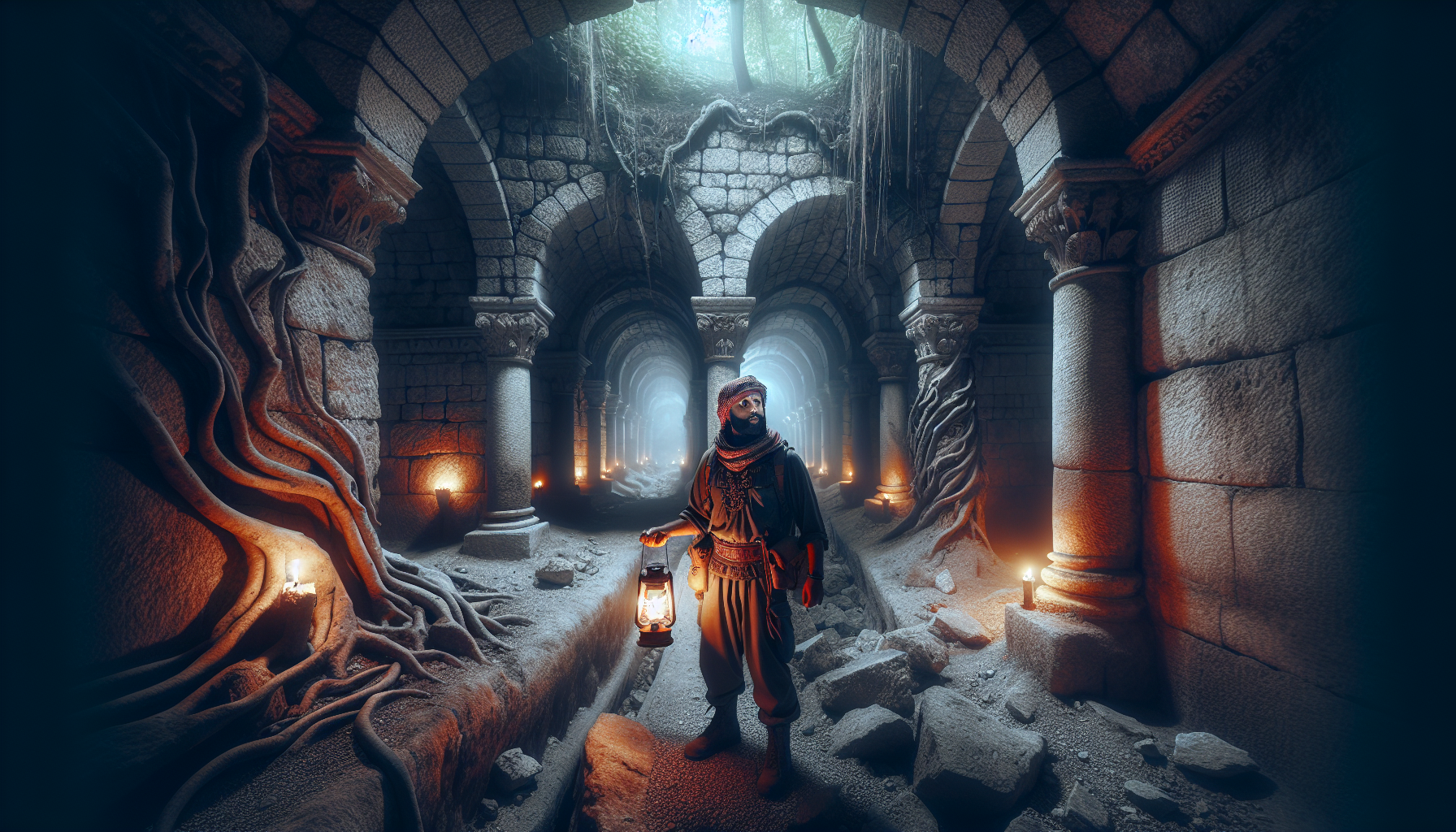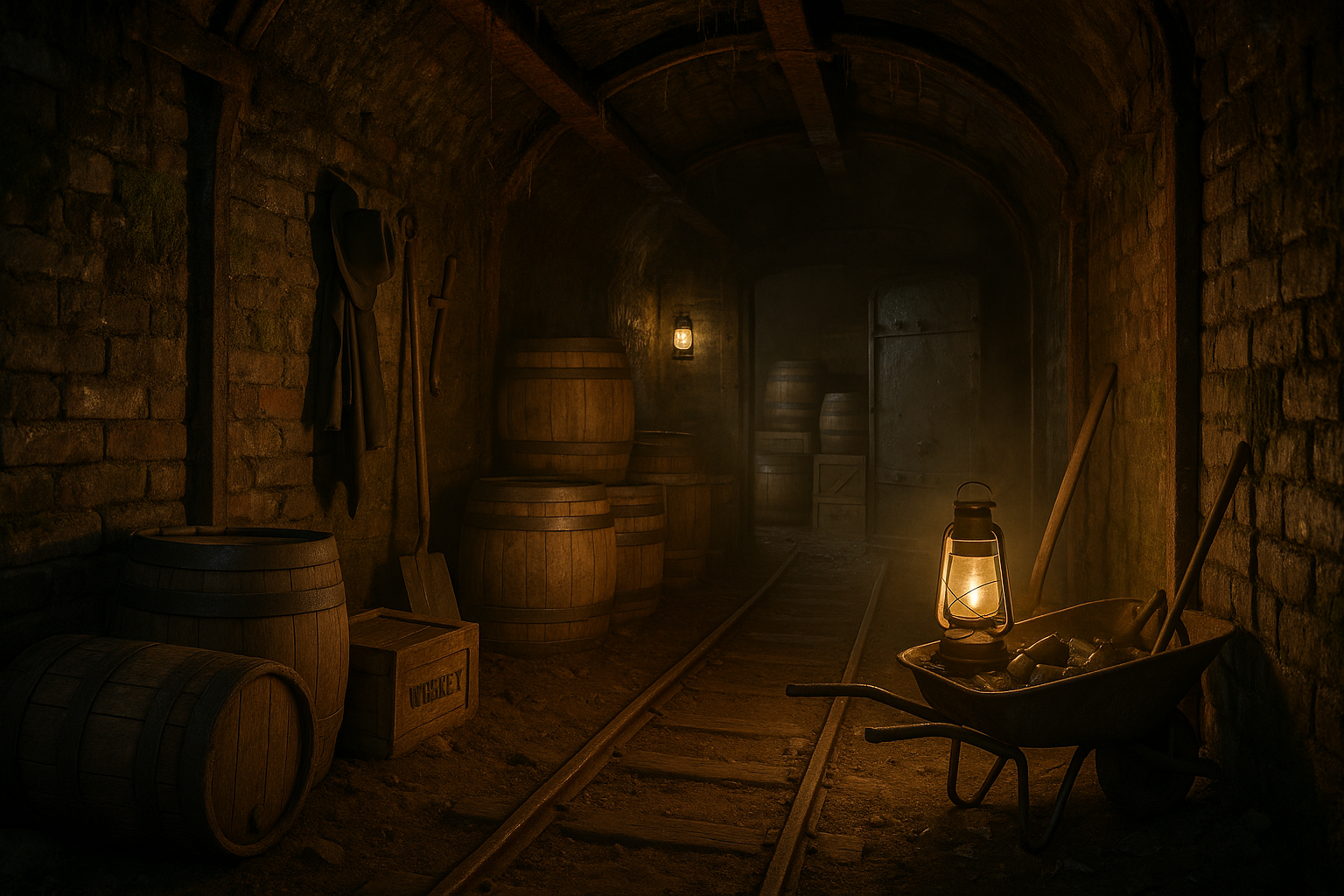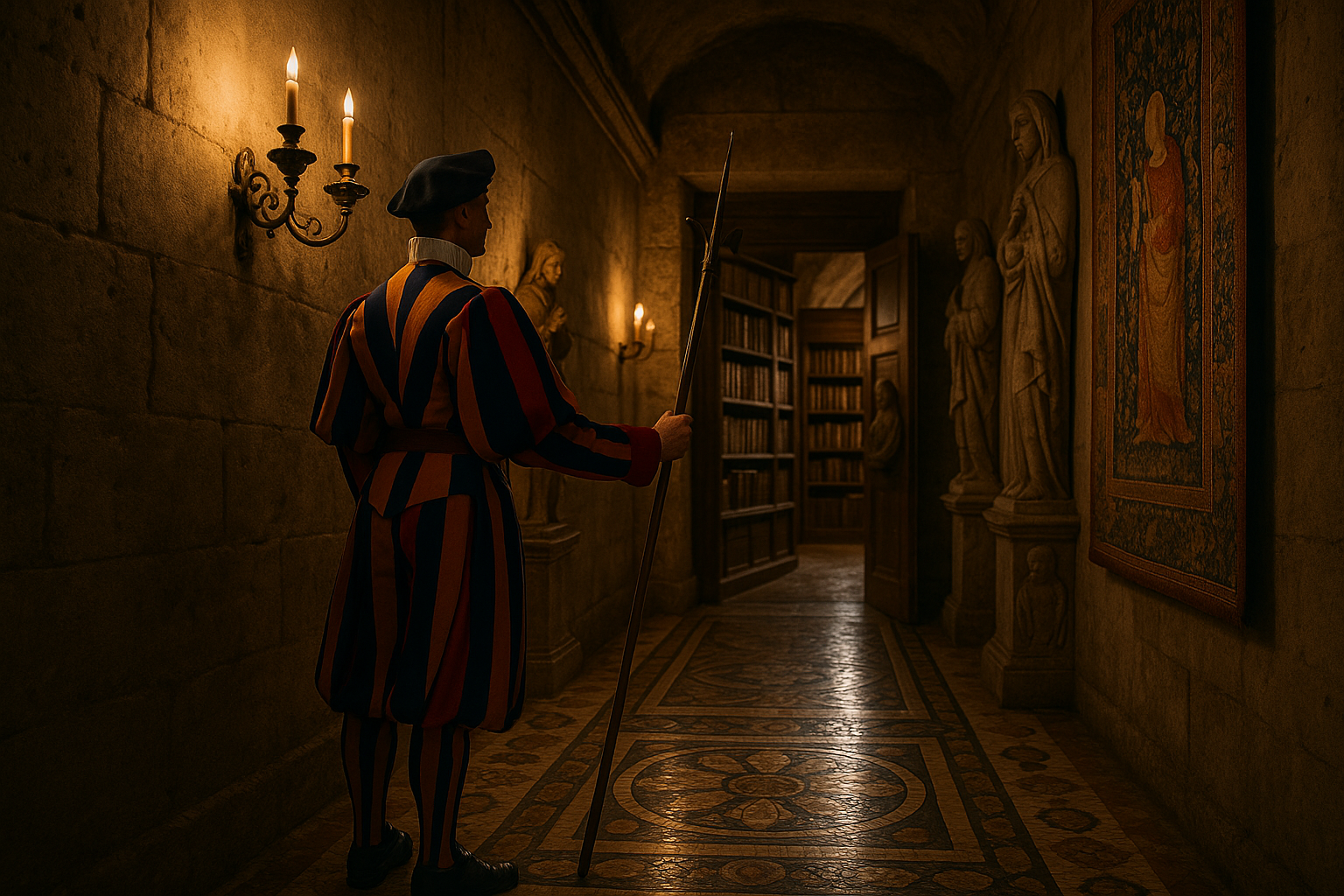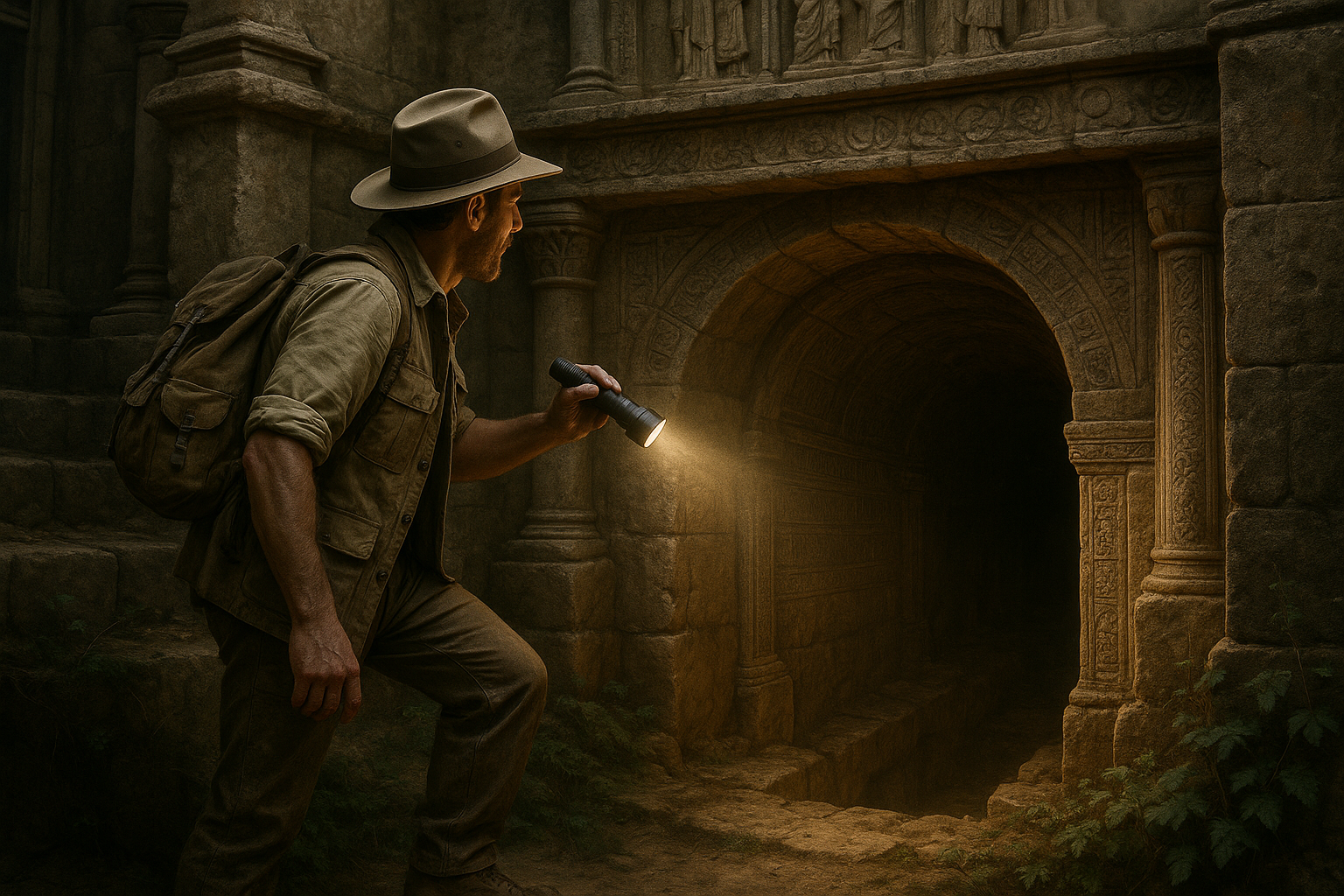In a continent where history is often etched in grand cathedrals, sprawling palaces, and bustling market squares, Europe holds a secret that lies not above ground, but beneath it. 🌍 When we think of fortresses, images of towering ramparts and ancient stone walls come to mind, yet some of the most fascinating strongholds have been carefully concealed beneath the surface, hidden away from plain sight. These subterranean fortresses are scattered across Europe, each one a silent guardian of stories untold, waiting patiently for those curious enough to venture into their depths. Welcome to the enchanting world of Europe’s hidden underground fortresses, where history, mystery, and adventure intertwine in the shadows beneath our feet.
From the echoing tunnels of Maastricht’s Casemates in the Netherlands to the eerie silence of the catacombs under Paris, these underground wonders offer an unexpected glimpse into the past. Each fortress, with its intricate network of tunnels and chambers, tells a unique story of strategic brilliance, architectural innovation, and human resilience. They were constructed as formidable defenses, providing refuge during sieges and serving as secret passageways for troops. Today, they stand as remarkable reminders of Europe’s tumultuous history, inviting explorers to uncover the mysteries that lie in their dark corridors.
In this article, we’ll delve deep into the fascinating world of these subterranean fortresses, shedding light on the history and purpose behind their construction. We’ll journey through the underworld of Slovenia’s Predjama Castle, a fortress built within a cave, and explore the strategic genius of Finland’s underground facilities that blend seamlessly with the natural landscape. Each stop on our subterranean tour offers a distinct narrative, from the wartime resilience of Italy’s underground bunkers to the innovative engineering of the Wieliczka Salt Mine in Poland, where defensive architecture meets artistic grandeur.
But this exploration is not just about the bricks and mortar of these hidden fortresses; it’s about the human stories and historical contexts that bring them to life. These fortresses have witnessed tales of heroism, cunning, and survival. They have been silent witnesses to the relentless march of time and the countless dramas that have unfolded within their confines. Through these stories, we gain a deeper understanding of the cultural and historical landscapes of the regions they inhabit. We’ll explore how these underground marvels served not only as military fortifications but also as cultural touchstones and places of refuge during times of conflict.
The Enigmatic World Beneath Our Feet: An Introduction
The vast continent of Europe is renowned for its rich history, stunning landscapes, and vibrant cultures. Yet, beneath the cobblestone streets and sprawling fields lies a hidden world teeming with stories of the past: the subterranean fortresses. These hidden gems, often overlooked by the casual traveler, are a testament to human ingenuity and resilience. They are remnants of bygone eras, constructed for protection, storage, and as places of refuge. This article delves into some of the most fascinating underground fortresses in Europe, offering insights into their history, significance, and current state.
From the labyrinthine tunnels of the Wieliczka Salt Mine in Poland to the eerie bunkers of Albania, each site tells its own unique story. These fortresses are not just relics of military history; they are architectural marvels that have stood the test of time. In many cases, they were built in response to specific threats or needs, using the natural landscape to their advantage. As you journey through this article, you’ll uncover the strategic importance of these sites, their role in shaping European history, and the efforts being made to preserve them for future generations.
Join us as we explore the depths of Europe, revealing the secrets hidden beneath its surface. Whether you’re a history buff, an architecture enthusiast, or simply curious about the unseen world below, this exploration promises to be both enlightening and inspiring. Prepare to be amazed by the ingenuity of ancient engineers, the stories of resilience and survival, and the breathtaking beauty of these subterranean sanctuaries.

Conclusion
In conclusion, the exploration of Europe’s hidden subterranean fortresses unveils a fascinating layer of history and architectural ingenuity that often goes unnoticed. Throughout this article, we have journeyed beneath the surface to discover a world that combines mystery, strategic military planning, and remarkable engineering. These subterranean structures, tucked away beneath bustling cities and tranquil countrysides, hold tales of resilience, innovation, and the relentless human spirit that are as awe-inspiring as they are educational.
Firstly, we delved into the historical context that led to the construction of these fortresses. From medieval times through the World Wars, the evolution of military architecture played a crucial role in shaping Europe’s defense mechanisms. These underground fortresses were designed to withstand sieges, protect valuable resources, and serve as command centers in times of conflict. Their construction required not only advanced technical skills but also a deep understanding of the geographical and political landscapes of their times.
Next, we highlighted some of the most notable subterranean fortresses across Europe, each with its unique story and architectural style. For instance, the La Rochelle Bunker in France served as a pivotal U-boat base during World War II. Meanwhile, the Wieliczka Salt Mine in Poland, though initially a site for salt extraction, evolved into a strategic location during various conflicts. These examples underscore the adaptability and multifaceted use of subterranean spaces throughout European history.
Moreover, we explored the architectural techniques and innovations that made these fortresses possible. The use of natural rock formations, advancements in mining technology, and the strategic incorporation of tunnels and chambers all reflect a high level of ingenuity. These fortresses were not only functional but also sustainable, often utilizing natural materials and integrating seamlessly with their environment.
Importantly, we examined the preservation and modern-day significance of these fortresses. Many have been converted into museums, tourist attractions, or research sites, offering valuable insights into the past. Preservation efforts ensure that these historical treasures are not lost to time and continue to educate and inspire future generations. The commitment to maintaining these sites reflects a broader understanding of their cultural and historical importance.
Furthermore, we discussed the role of these fortresses in shaping national identities and their influence on contemporary military strategies. As symbols of resilience and innovation, they contribute to a shared European heritage and serve as reminders of the continent’s tumultuous past. Understanding their historical significance provides context for current geopolitical dynamics and defense strategies.
This exploration of Europe’s subterranean fortresses not only deepens our appreciation for historical architecture but also invites us to reflect on the broader themes of human ingenuity and resilience. These hidden fortresses, though shrouded in mystery and often overlooked, offer invaluable lessons about the power of human creativity and the importance of preserving our shared history.
As you reflect on the insights gained from this article, consider the broader implications of uncovering and preserving hidden histories. The stories of these subterranean fortresses are not just about the past; they are about understanding the present and preparing for the future. By preserving these sites, we honor the legacy of those who built them and ensure that future generations can learn from and be inspired by their remarkable achievements.
🌍🔍✨
For further reading and exploration, consider visiting the following resources:
1. [Atlas Obscura – Europe’s Underground Fortresses](https://www.atlasobscura.com/)
2. [UNESCO World Heritage Sites](https://whc.unesco.org/)
By continuing to explore and share these hidden histories, we contribute to a collective understanding and appreciation of our shared past. Let the journey beneath the surface inspire a deeper connection to the rich tapestry of human history.
Toni Santos is a visual storyteller and artisan whose work explores the quiet power of what lies beneath. With a deep fascination for subterranean and hidden architecture, Toni uncovers the layers, voids, and forgotten spaces that shape our built environment from the shadows.
His art is a journey through the unseen — from ancient underground chambers to sealed passageways, service tunnels, and foundations buried in time. Each creation tells a story of silence, secrecy, and structure — revealing how absence and concealment can be just as meaningful as what’s visible above ground.
Whether working through visual compositions, architectural studies, or symbolic handcrafted pieces, Toni captures the soul of hidden spaces. His work bridges art and archaeology, blending design with discovery. Trained in visual design and traditional techniques, Toni creates with intention. His pieces don’t just depict — they interpret, inviting viewers to rethink what space, memory, and architecture mean when they’re hidden from view.
As the creative force behind Vizevex, Toni shares this perspective through curated visual narratives, symbolic collections, and interpretive essays that give voice to the quiet geometries beneath our feet.
His work is a tribute to:
The mystery of spaces built to be forgotten
The symbolism embedded in foundations, voids, and passageways
The timeless connection between human intention and hidden structure
Whether you’re an artist, an urban explorer, or someone fascinated by the unseen frameworks that support our world, Toni invites you into a realm where architecture becomes myth — one corridor, one layer, one buried story at a time.





